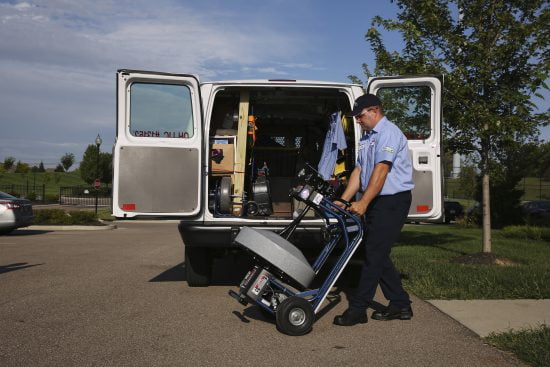There are more than a million miles of sewer lines in the United States, and most of the time they invisibly do their jobs – taking wastewater from your home and transporting it to the nearest processing plant. However, with so many underground pipes, sewer problems are bound to occur from time to time. Major sewer line problems are rare, but if one happens near your home, you may need to call for sewer line replacement or repair services.
This is a major undertaking, so you need to know what’s going to happen. In this article, we’ll talk about how sewer lines get damaged, what repair options you have, and when sewer line replacement is the only option.
1. Common Causes Of Sewer Problems
Buried underground, sewer lines are protected from a lot of things that can damage them. However, there are still ways for them to become cracked and broken over time. Some of the most common problems are:
a. Corrosion

Sewer pipes are typically made from hard metals like steel or cast iron, so they can stand up to decades of use. These are galvanized to make them resistant to rust or corrosion. Unfortunately, corrosion can still eventually start working its way into the pipes anyway. It takes decades, but once a pipe has become rusted, even a minor shift in the ground can potentially break it open.
b. Tree roots
Trees can send out roots a long distance from the tree, and the larger the tree, the bigger its root system. Large tree roots can put so much force on sewer lines that they crack open, or roots actually start growing through the line.
c. Clogs
Sewer line clogs are rare, but they can happen – especially in the relatively small pipes connecting your home to the main lines. If you avoid flushing food or other non-waste objects down the toilet, you can reduce the chances of a clog.
d. Severe cold
This one is rare, but a truly deep freeze can occasionally penetrate a sewer line and cause it to freeze up or crack. Unfortunately, there’s nothing you can really do to prevent this if it does happen.
2. Signs Of Sewer Line Problems
Since sewer lines are buried underground, how do you know if there’s a problem? There are plenty of red flags.
a. Whole-house water draining problems
Everyone gets a clogged sink or toilet now and then. However, if every drain in your house is acting like it’s clogged, that’s a very bad sign. It typically means there’s a problem with the sewer lines. (Or your septic tank, if you have one.)
b. A swampy yard
Probably the biggest sign of a sewer line break is that it can start flooding your yard – and it smells like you’d expect. Sewage is toxic, so stay off of your lawn and call for emergency sewer repair ASAP!
c. Water backing up
In rare cases, a clogged sewer can cause water to back up into your home, or start flooding into your basement. Again, this is a potentially dangerous situation, and you’ll need to call in a qualified plumber as soon as you can.
If sewer water has made it into your basement, you may also need professional water cleanup services to deal with the mess.
3. Methods Of Sewer Line Replacement And Repair
So if there is a problem with the sewer line under your home, or running near it, what sort of repair options are available? Obviously, sewer line replacement is considered a last resort. Here are some of the other ways it might be repaired.
a. Hydro jetting
Hydro jetting, or water jetting, involves taking a high-pressure water hose and blasting it at a clogged pipe. If a sewer line is only clogged, not broken, this can often clear the clog without any need to dig or work on the sewer pipe directly. That’s a good thing since this is usually the cheapest fix.
b. Cable Cleaning
This is how Roto-Rooter got its name and our founder’s most famous invention. Cable cleaning involves sending a spinning blade on a flexible hose down into a sewer pipe, which is used to chew through clogs or potentially even chop up tree roots. In other words, it’s a rotating root remover: Roto-Rooter!
Of course, if a tree root has grown through the pipe, some amount of direct physical repairs will be needed as well.
Cable cleaning can also be effective at preventative maintenance. If there’s reason to think a sewer line is starting to get clogged, sending the cable through will remove any clogs in progress before they become full blockages.
c. Pipe replacement
If the problem can’t be fixed by cleaning the interior of the pipe, then there’s just no other option but to dig up the pipe and replace it. Sewer line replacement is expensive, although depending on how your local municipal services work, there’s a chance the city may pick up the bill. Responsibility for sewer lines varies from area to area.
Work (and cost) is kept as low as possible by first sending fiber-optic video cables through the pipe, to identify the exact places which are cracked or broken. That minimizes the amount of digging which has to be done.
Roto-Rooter Can Help With The Biggest Sewer Line Problems
We literally earned our name by developing new techniques for cleaning and repairing sewer lines, and it’s still one of our most necessary services. Remember: sewage is dangerous and potentially toxic. If you smell sewage or otherwise think you have a sewer line problem, do not delay!
Contact Roto-Rooter California ASAP for the best in sewer line replacement and repair or call us at 800-491-ROTO.